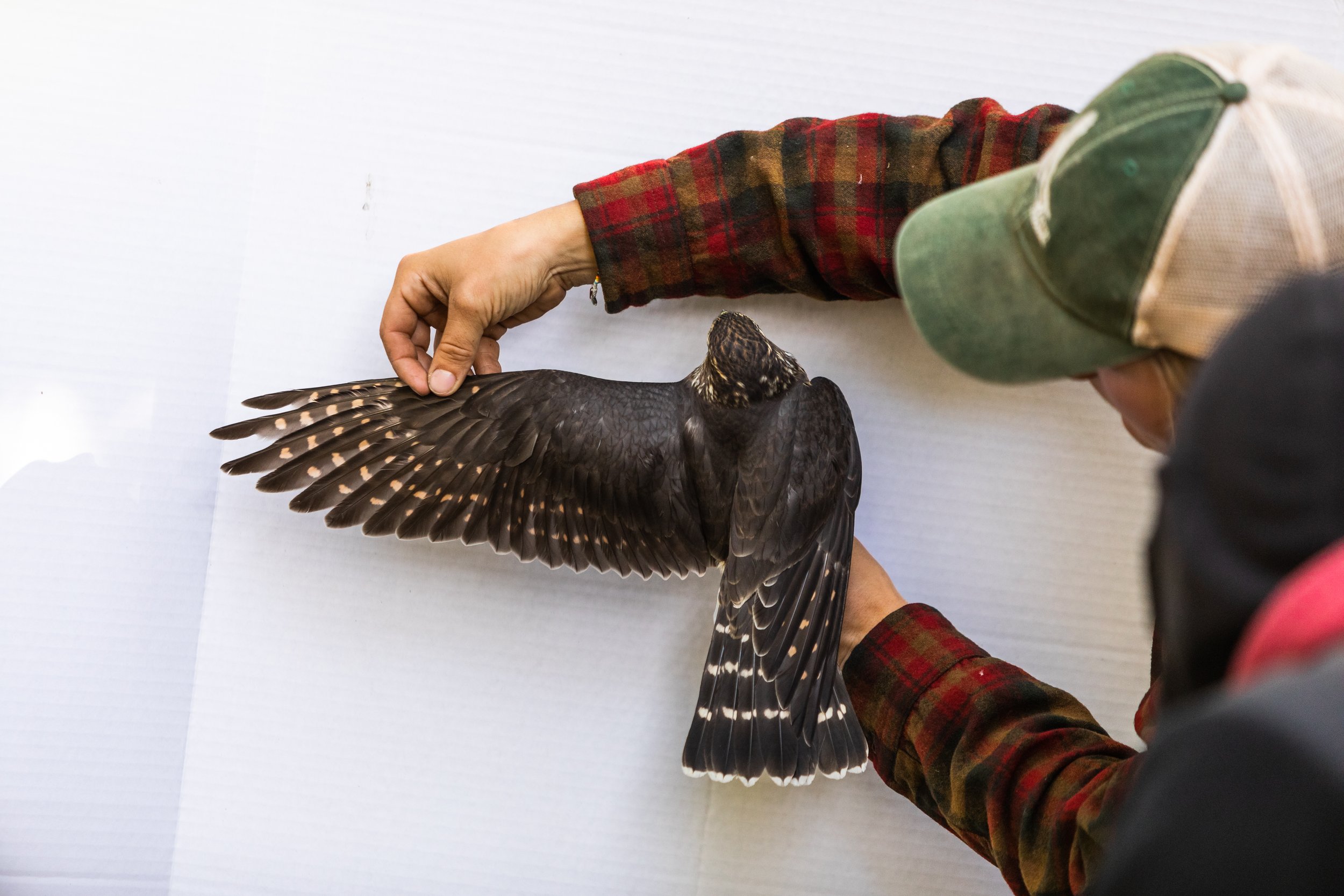Raptor Lessons with Hawkwatch International
Searching for chance encounters with wildlife here at home in north central Washington, I stumbled across an opportunity I had actually heard of years previously working for the US Forest Service on fire and fish ecology field crews; raptor migration surveys.
Every year from August though October, a unique dry-land forest landscape with rocky outcrops and high alpine crags overlooking the plains and rolling sage lands of the Columbia Basin, Chelan Ridge, is used as an observational research station and one of around 10 sites staffed by small groups of educators, biologists, conservationists and birders from Hawkwatch International — an organization centered on raptor conservation and dedicated to keeping tabs on migrating raptors using the Pacific Flyway; a major north-south migratory flyway of the western United States spanning from Alaska to Argentina.
Chasing food sources, finding breeding grounds and wintering sites, the Pacific Flyway serves as a superhighway for thousands of migrating birds. As ecosystem indicators, scientists and the wildlife ecology community are especially interested in the many species of raptors soaring on thermal ridges and hunting mountainsides along the flyway.
Merlins, Peregrine Falcons, Sharpshin hawks, Red-Tail hawks, Golden Eagles, Harriers and several other species frequent the site as they glide by, catching up-currents of winds pushing through the Cascade Mountains that keep them effortlessly airborne as seasonal temperatures drop and they make their ways south before winter’s snows.
In daily counts sometimes surpassing 100 birds, processing and banding also takes place, helping to create a long term database used to track movements, numbers and overall health monitoring of these incredible Raptor populations and pathways.
North Cascades Institute, a Pacific Northwest institution dedicated to inspiring environmental stewardship through transformative learning experiences in nature, facilitates group outings for volunteers to help with observations but also sharpen their raptor identification skills, understand how the bigger picture of raptor conservation and even get to see some of the trained biologists process and gather data on some magnificent birds.
Knowing that the Pacific Flyway also cuts a broad and not so specific path, we started looking around areas along the Waterville Plateau where I grew up. In search of not only raptors, but their prey. We were rewarded with some sights and experiences I had no idea were even possible. The birds and species of North Central Washington I always knew were unique, but I had never set out so specifically in search of them.
Here are just a few photos from our day with Hawkwatch International and the subsequent few weeks following as we spent hours driving about 10 mph through dusty back roads and draws of the incredibly unique ecosystem of shrubb-steppe sagelands and dry rolling miles of grasslands that cover thousands of square miles of the Waterville Plateau and great Columbia Basin.
Thanks for looking,
-Rhys
The view of ridge up on ridge of the Cascades, seen from Chelan Ridge looking northwest.
A juvenile Sharpshin Hawk, caught and processed before being safely released.
Trained and permitted conservationist Amanda Hancock, carefully handles a Merlin Falcon, being processed during long days looking for raptors. Weight, health, crop, age, sex and species are all used to gather information for a database use to track raptor movements and populations over time.
A Sharpshin Hawk watches fiercely before being safely released.
Detailed images of wing length and plumage is gathered to add to each individual birds processing profile. A white piece of cardboard is kept handy to ensure accurate color and capture of the photos.
A male Northern Harrier systematically works a field searching for voles, mice, small birds and snakes.
A female Northern Harrier pounces on her prey.
American Kestrel
Red Tail Hawk
Male Northern Harrier
Finding birds of prey often means first finding their prey.. A Mountain Bluebird taking a rest on a fencepost.
Yellow Rumped Warbler
Virgin Sagebrush is difficult to find anymore, its fractured islands stretch across massive areas from Waterville to Spokane and south towards the town of Moses Lake and Tri-Cities. Mostly removed for agriculture, its an ecosystem and landscape science is only beginning to unravel. Home to several threatened and endangered species, it is completely unique and Washington has some of the best remaining shrub steppe, some sagebrushes reaching 10 feet tall.
A growing problem in the American West, fires have continued to threaten not only farmlands and forest, but the wind driven plains and sagelands of North Central Washington. Here, a fire started by machinery that was considered to have been put out fairly quickly. Grasslands recover quickly, but sagebrush growth is extremely slow, sometimes taking decades.
Golden Eagles also frequent the plateau and shrubb-steppe, their sheer size and rare wingbeats help with the identification, seeing them up close is nearly impossible but once in awhile you can be extremely lucky if they are not disturbed by your presence. This one swooping low, working the basalt cliff-sides in search of prey like rabbits, marmots, and even scavenging other kills.
Golden Eagle soaring
Sharpshin Hawk searching basalt cliffs for prey.
A group of Quail is called a ‘covey.’ Quail can be found throughout shrub-steppe and are unmistakable with their forehead feather and nervous demeanor. You’d be nervous too if just about everything wanted you for a snack..
Blue or ‘Dusky’ Grouse
An American Kestrel soaking up the warmth of the sun on an early morning.
American Kestrels, male and female
Female Northern Harrier
Male Northern Harrier
Kestrel with a snake
Golden Eagle chasing a Raven
Female Northern Harrier
American Kestrel buzzing me to take a look
Rare and protected Sage Grouse































